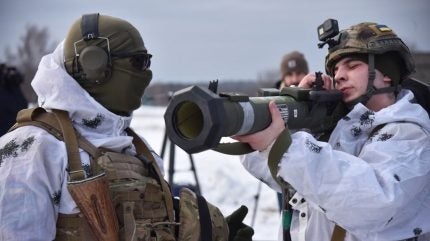
The Russian invasion of Ukraine has forced institutional investors, the foreign direct investment (FDI) community and the governments of many countries to rethink their approach towards backing the defence industry. This area has been a no-no for ESG-conscious investors, with many looking to divest from arms companies or exclude controversial weapons from their portfolios in recent years, a situation exacerbated by Russia’s invasion of Ukraine.
In November 2021, Norwegian pension fund KLP announced that it would no longer deal with companies that produce certain kinds of highly destructive weapons. This has led to KLP divesting from 14 companies: Babcock International, China Shipbuilding Industry, Dassault Aviation, Elbit Systems, General Dynamics, KBR, L3Harris Technologies, Larsen & Toubro, Leidos Holdings, Leidos, Leonardo, Raytheon, Rolls Royce and Thales.
The majority of Switzerland’s pension funds are also avoid investing in the arms business, according to a survey by Swissinfo.ch. Of the 11 pension funds that took part in the anonymous poll, eight stated that they do not invest in the manufacturers of “controversial weapons, which include cluster bombs, anti-personnel mines and weapons of mass destruction”, while the other three funds didn’t provide any information on the matter.
US pension funds have also been under pressure to review their portfolios and sell off their investments in the arms industry over the past few years, often following mass shootings that have taken place in the country.
A total or partial withdrawal from the arms industry?
While some investors have only excluded the ‘highly destructive weapons’ segment from their portfolios, others have divested from the defence or arms industry altogether. However, the Russian invasion of Ukraine has changed the outlook of some institutional investors, particularly in countries that may feel under greater threat than they did before Russia’s act of aggression.
In Sweden, SEB’s fund company, SEB Investment Management, has decided to reverse its sustainability policy and permit some of its funds to invest in defence companies. More specifically, some funds that invest in equities and corporate bonds will be able to invest in the defence industry, but all the funds will continue to exclude investments in companies that manufacture, develop or sell weapons that violate international conventions, or that are involved in the development of nuclear weapons programmes.
How well do you really know your competitors?
Access the most comprehensive Company Profiles on the market, powered by GlobalData. Save hours of research. Gain competitive edge.

Thank you!
Your download email will arrive shortly
Not ready to buy yet? Download a free sample
We are confident about the unique quality of our Company Profiles. However, we want you to make the most beneficial decision for your business, so we offer a free sample that you can download by submitting the below form
By GlobalDataHowever, it is not only the investment community that has changed its approach towards the defence industry, as several countries have altered their outlook over the past month.
Germany has shifted its policy towards sending weapons to conflict zones, with Chancellor Olaf Scholz confirming that the country would supply such goods to Ukraine. He has also said that Germany will invest more in its defence and the military sectors, announcing plans to increase spending on the sectors to more than 2% of its GDP.
Sweden has also altered its approach towards supplying arms to conflict zones, sending field rations, helmets, body armour and single-use anti-tank launchers to Ukraine. Sweden’s Prime Minister, Magdalena Andersson, stated that this was the first time that Sweden had sent arms to a country in armed conflict since the Soviet Union attacked Finland in 1939.
Where does FDI in the defence industry go?
With security concerns rising across the globe, investing in the defence industry is an ever-permanent option on an investor’s agenda. GlobalData’s FDI Projects Database shows that 68 defence projects were announced or opened in 2019 and 2020.
The countries attracting the most FDI in defence are the US, the UK, Australia, Germany, Turkey, the United Arab Emirates (UAE), Pakistan, Ukraine, Finland, India, Belgium, Poland and the Netherlands.
The data shows that the majority of foreign investment in the defence industry has gone to the 'miscellaneous space and defence' sector, followed by military fighting vehicles and weapons and ammunition.
The 21 miscellaneous space and defence projects were spread across Australia, Belgium, Canada, Finland, Germany, India, Kenya, Netherlands, Pakistan, Spain, the UAE, Ukraine, the UK and the US.
The countries that attracted FDI projects in military fighting vehicles in 2019 and 2020 were Australia, Chile, Finland, France, Germany, Indonesia, Malaysia, Pakistan, Philippines, Romania, Sri Lanka, Turkey, the UAE, the UK, the US and Vietnam.
As for the weapons and ammunition sector, FDI projects were announced or opened in Australia, Belgium, Brazil, India, Poland, Turkey, the UAE and the US.
The majority of the investors launching greenfield FDI projects in the defence sector came from the US, the UK, France, Israel, India and Italy.
The Russian invasion of Ukraine has been a game changer, pushing investors to rethink their policies when it comes to the defence sector. However, it has also brought changes in terms of embracing ESG and ethical investment. It remains to be seen how FDI and institutional investors are going to step up their defence game in the post Russia-Ukraine conflict, and if this will translate to further changes in their geographical and sector exposure.



